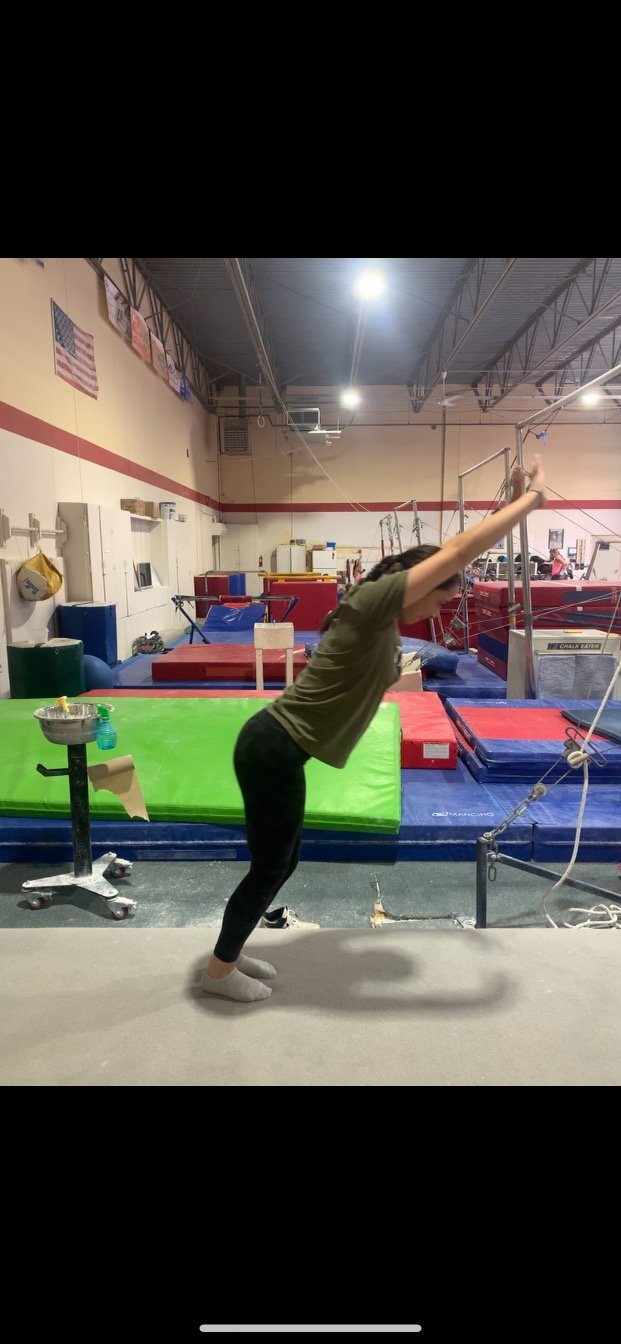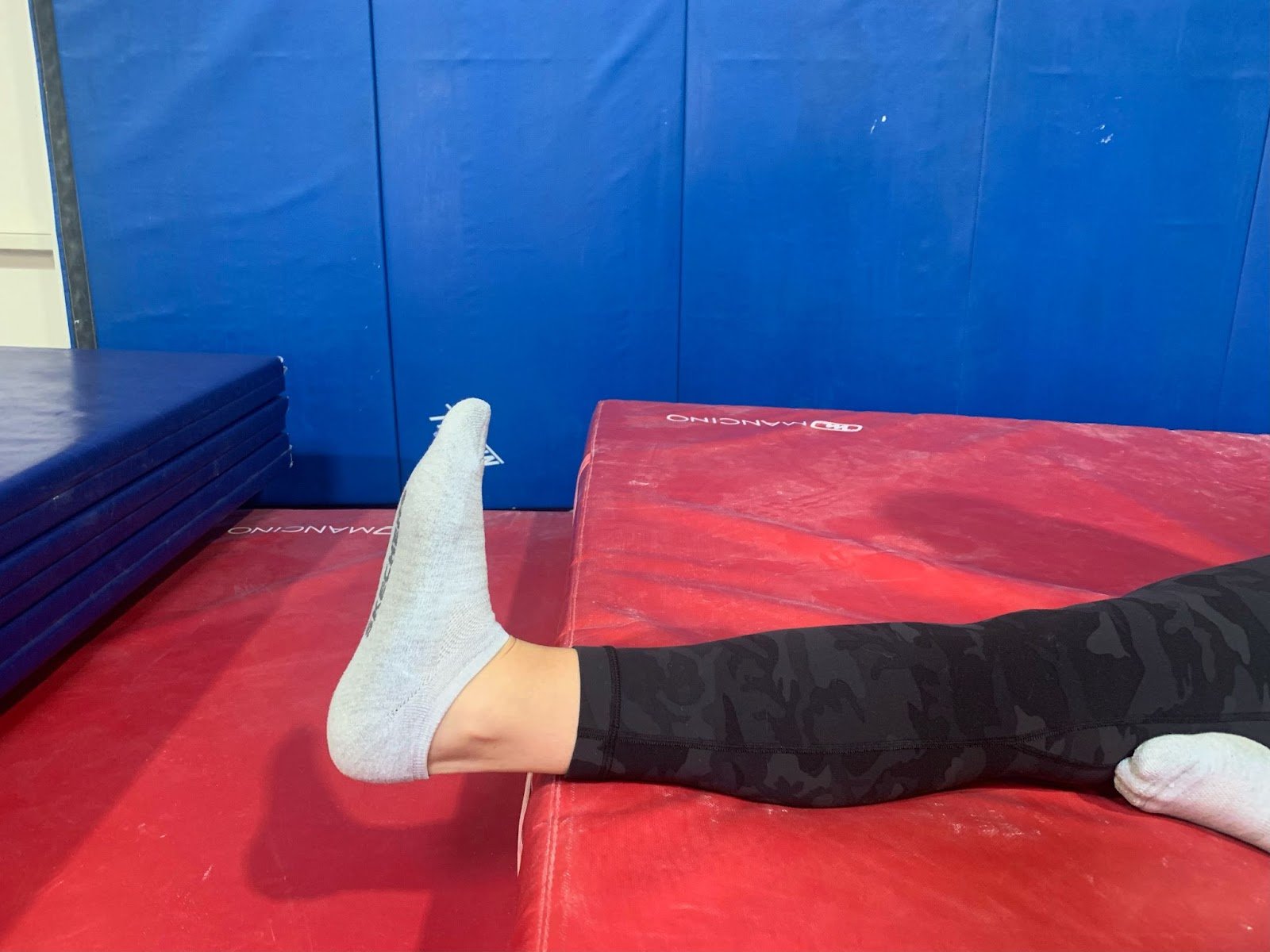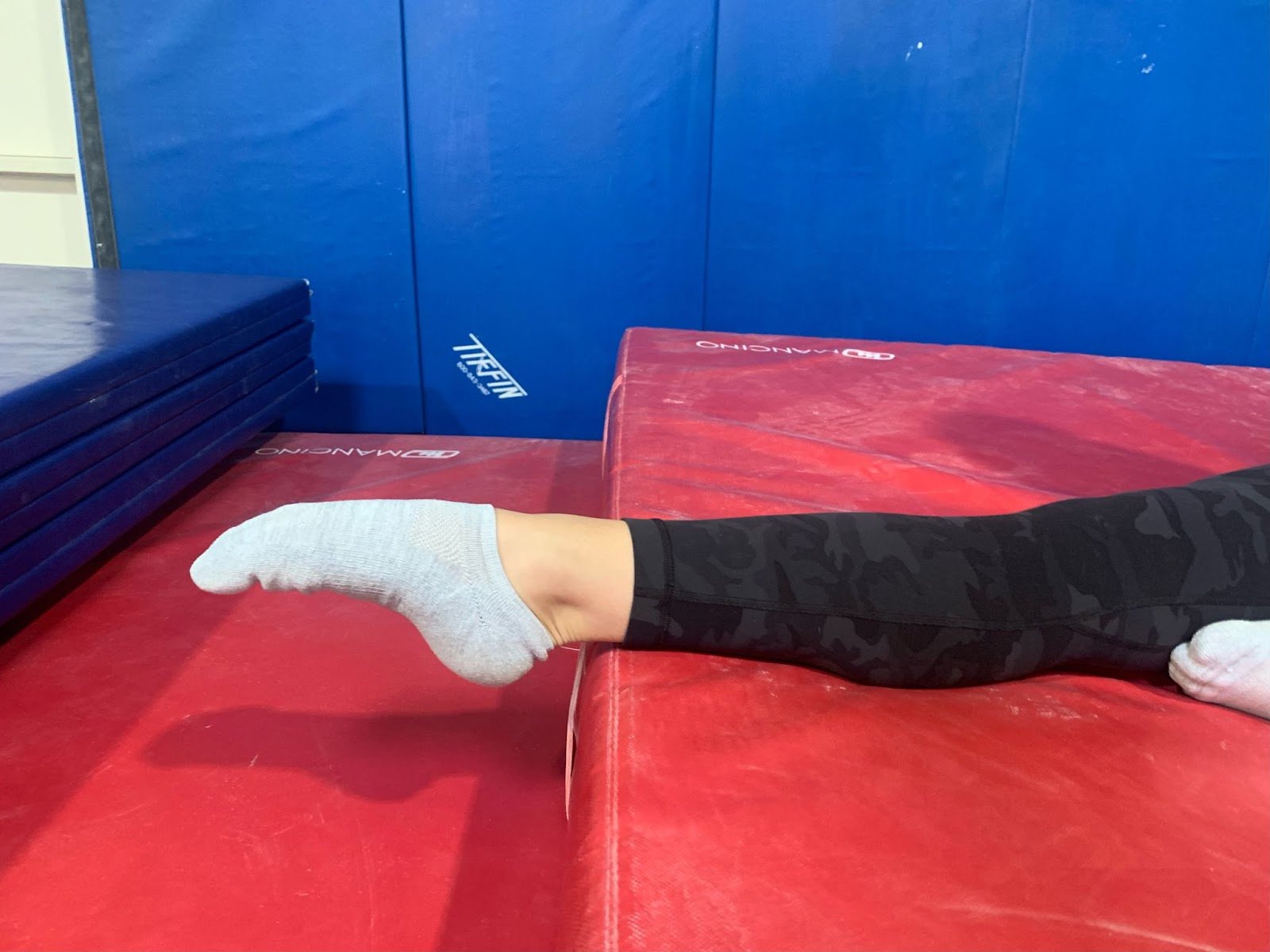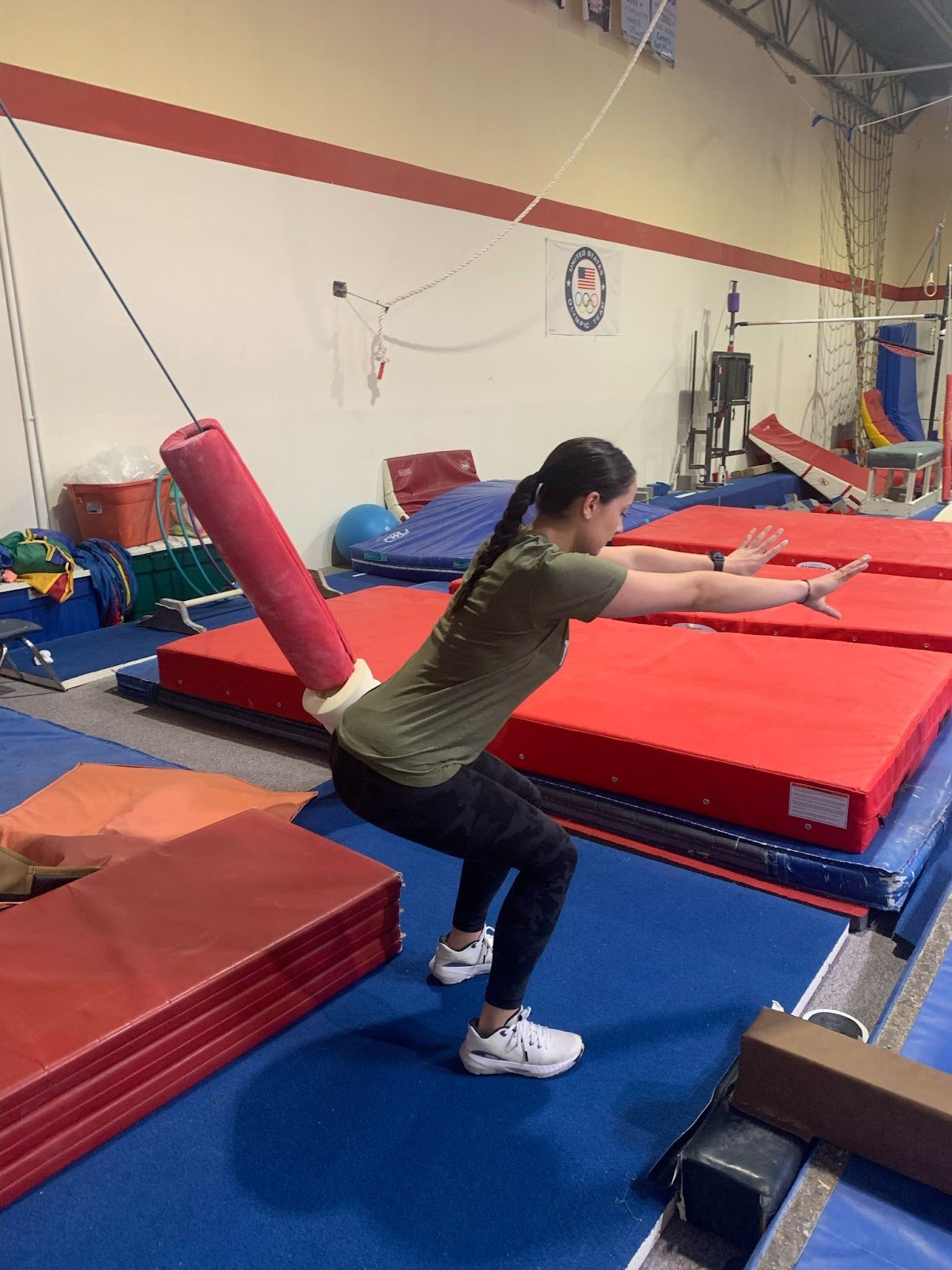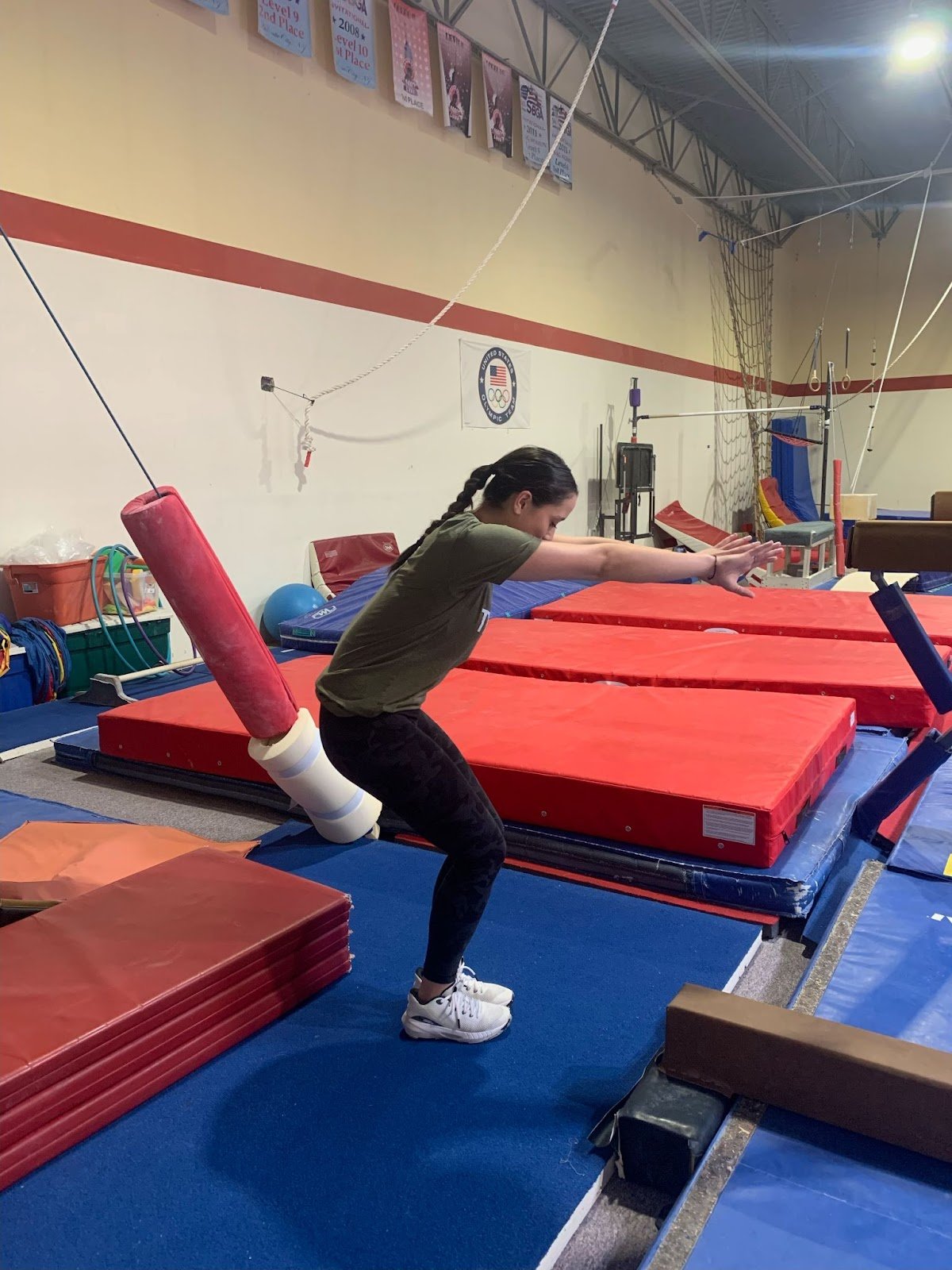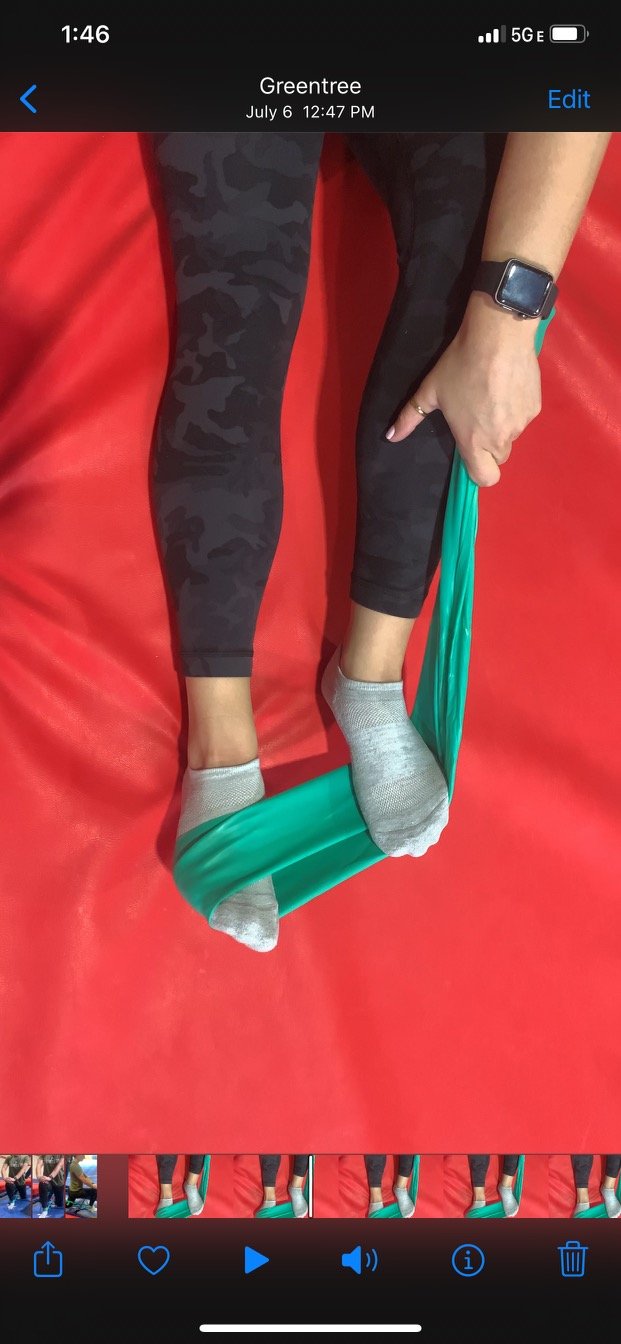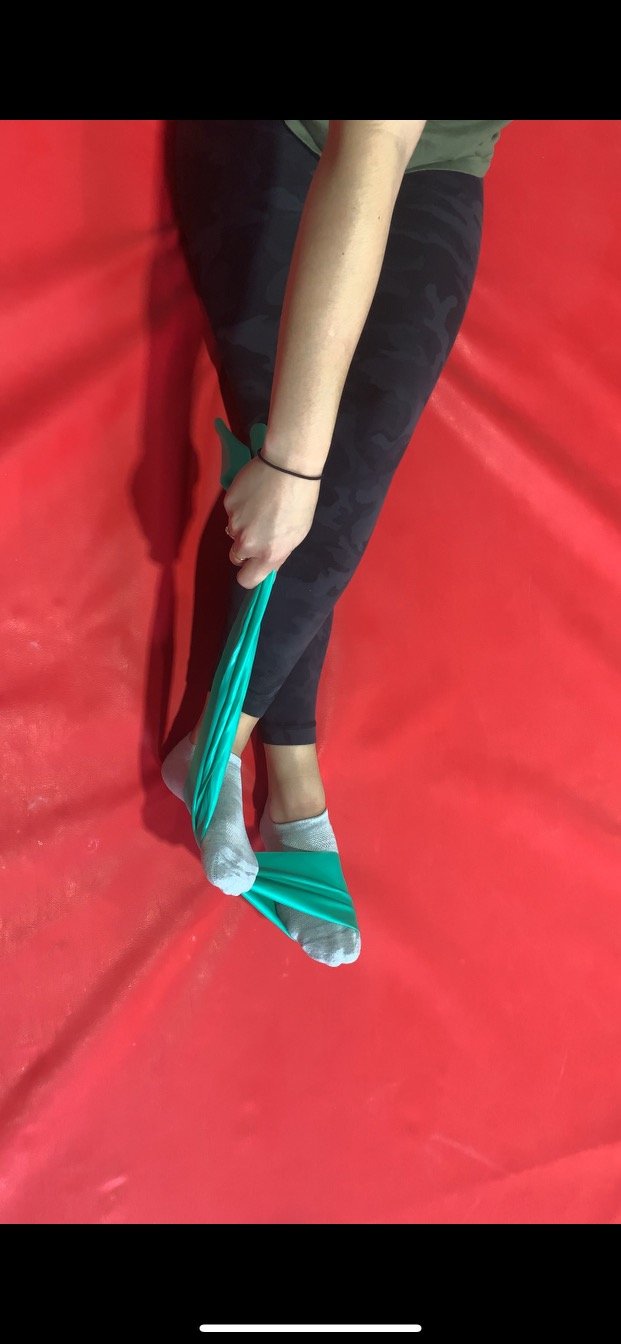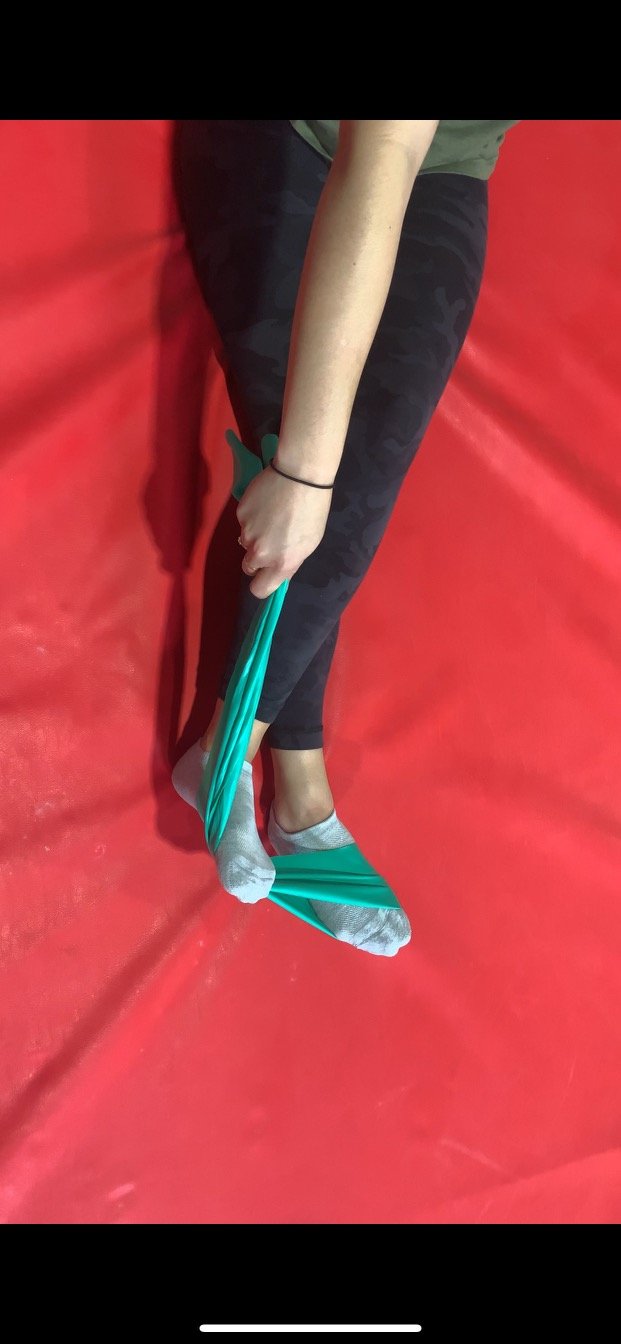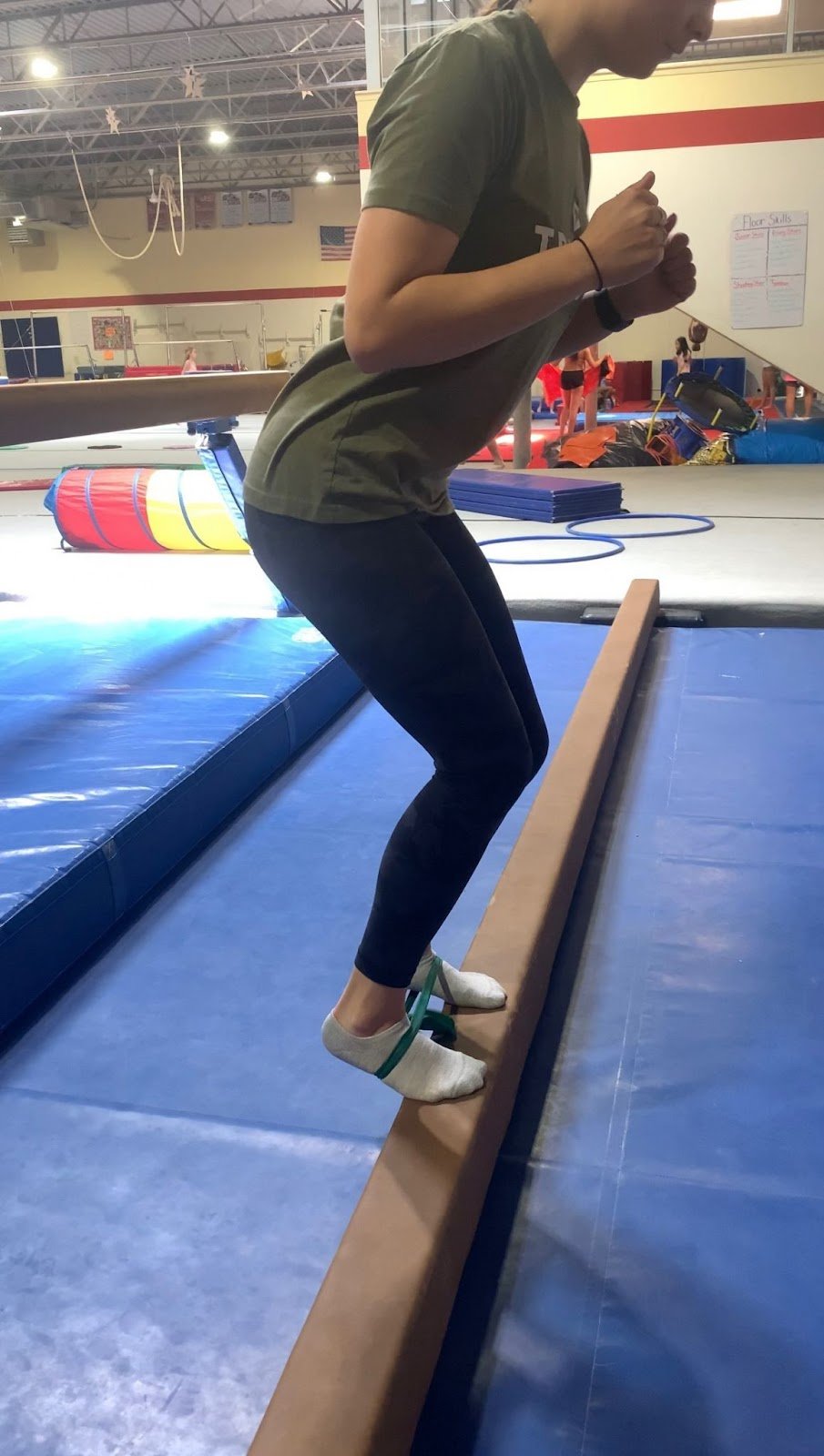Gaining the POWER to Avoid Achilles Tendon Rupture in Gymnastics
Introduction:
Artistic gymnastics is a highly demanding sport which, for the higher level gymnasts, is a year-round commitment. The sport involves many powerful take-offs, rebounding and landings which produces a large amount of force on the spine and other joints of the body. For example, a back handspring on the floor produces about 3.4-5.6x a person’s body weight through their feet and a backwards take off into a skill like a double back on floor produces about 16x a person’s body weight through their Achilles tendon.
A rupture of the Achilles tendon involves an injury to the lower leg in which there is a partial or full tear of the muscles that attach from the back of your calf to the heel. A rupture is typically due to a sudden increase in stress on the tendon which can occur during situations like stepping into a hole, falling from a height or when in relation to gymnastics, during jumping, tumbling and backwards take-offs. Achilles tendon ruptures are very common in the sport of gymnastics which may be attributed to multiple relating factors.
Relating factors:
One contributing factor is a build up of repetitive forces over time through the Achilles tendon. Due to the nature of repetition built in throughout the sport, there is an abundance of landings, rebounding and jumping done by any gymnast. This places large amounts of force through the Achilles tendon which may be increased when landing with the feet maximally flexed before a quick and powerful take-off, like shown in the photo below.
Another factor is ankle motion imbalance. When available flexibility of any joint is less than the flexibility demands of a certain skill, it opens the door for the development of compensatory strategies and/or pain. Gymnastics commonly involves significant plantar flexion of the ankles or a “toe point” which in turn, can affect the ability for the ankle to dorsiflex or “flex” which has an impact on squatting and landing mechanics. Overtime, this causes the calf musculature to shorten and forcefully pull through the Achilles tendon past its available motion.
Improper squatting and landing techniques may also contribute to Achilles tendon ruptures within the sport of gymnastics. Proper techniques are important because it will allow the gymnast to disperse the forces throughout the lower body more efficiently. Common improper techniques may include; landing short, the knees moving too far over the toes, not sitting back into the squat enough, rounded back or the knees falling inward. All of these positions can increase the force through the ankles and Achilles tendons.
Ways to minimize your chance of rupturing your Achilles tendon:
Here are a few things that can reduce your likelihood of rupturing your Achilles tendon and optimize your ability to produce power through your ankles and Achilles;
Proper warm-up and stretching routine
Specifically ankle plantar flexion, dorsiflexion and weight bearing dorsiflexion
Isolated ankle strengthening
Cross/strength training
Adequate physical preparation for the demands of higher level and repetition of skills is important!
Increasing activity level intensity slowly following an extended break
Listening to your body!
Mental stress, fatigue and/or pain can lead to short landings and compensatory strategies
3 Exercises to improve ankle mobility and produce power through the Achilles:
Banded knee drivers
This exercise will allow you to improve your ability for your ankle to be in a flexed position while keeping your foot flat on the ground and improve your ability to produce power following a backwards take off from this position.
Banded ankle inversion and eversion
By strengthening the less utilized muscles that turn the foot in and out around the ankle joint, you can reduce the likelihood of placing uneven stress on the Achilles tendon and increase stability surrounding the ankle.
Lateral banded walk on toes
This exercise not only improves the stability of the ankle by working the smaller muscles around the ankle, it also improves the strength and endurance of the calf muscles to sustain the many repetitions that comes with the sport of gymnastics.
Keep in mind, gymnasts are not prone to Achilles tendon ruptures. But, it is important to acknowledge the high repetitions and demands of the landings, jumpings and rebounding that come along with the sport and do your best to optimize your ability to perform your skills and routines.
By: Kennedy Ilagan, SPT
References
Bonanno, J., Cheng, J., Tilley, D., Abutalib, Z., & Casey, E. (2022). Factors Associated With
Achilles Tendon Rupture in Women's Collegiate Gymnastics. Sports health, 14(3),
358–368. https://doi.org/10.1177/19417381211034510
Kruse, D., & Lemmen, B. (2009). Spine injuries in the sport of gymnastics. Current Sports
Medicine Reports, 8(1),20–28.https://doi-org.ezproxy.stockton.edu/10.1249/JSR.0
b013e3 181967ca6
Mayo Foundation for Medical Education and Research. (2022, August 25). Achilles tendon
rupture. MayoClinic.https://www.mayoclinic.org/diseases-conditions/achilles-tendon
-rupture/ symptoms-causes/syc-20353234
Tilley, D. (2018, November 9). Combating achilles tears in gymnastics (PT I): Investigating
possible contributing factors. Gymnastics Achilles Injuries - What Can We Do? (Part
1).https://shiftmovementscience.com/combating-achilles-tears-in-gymnastics-pt-i-investig
ating-possible-contributing-factors/



